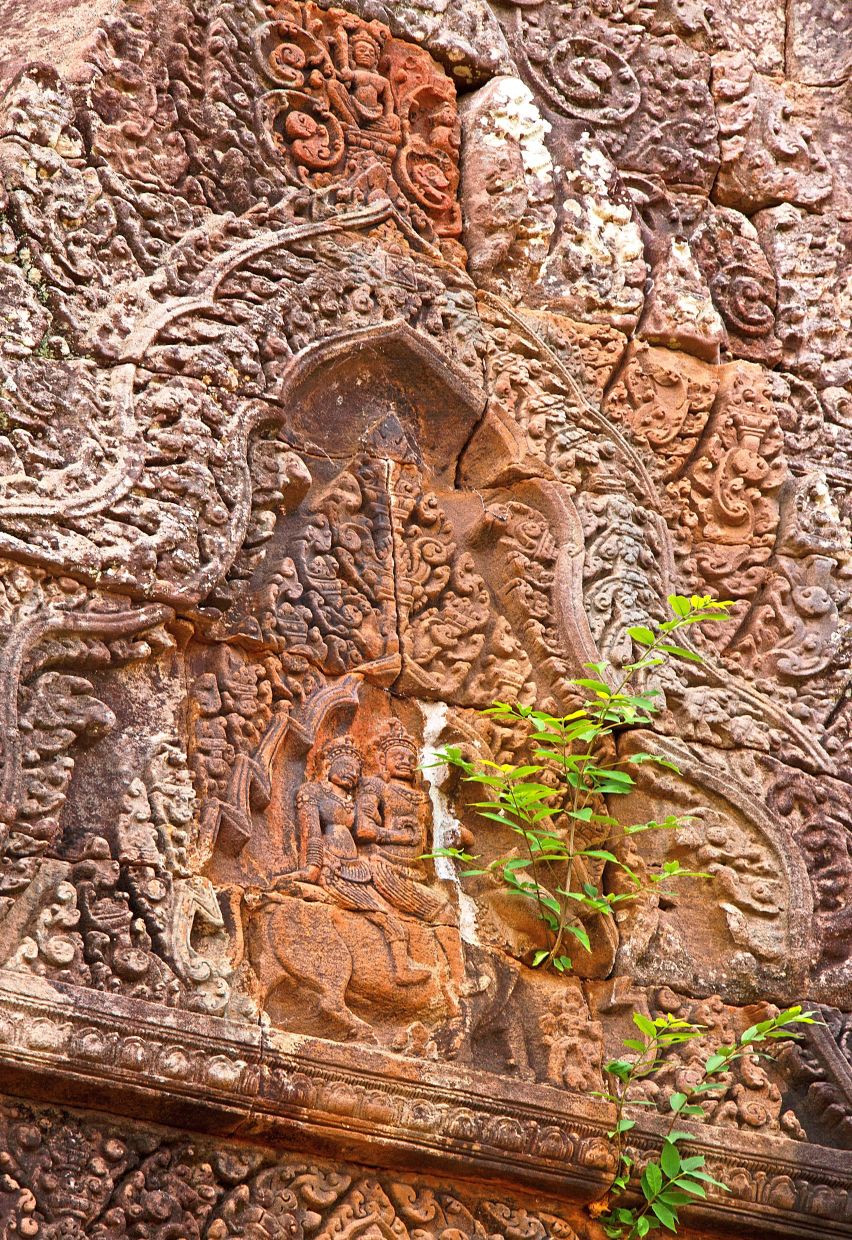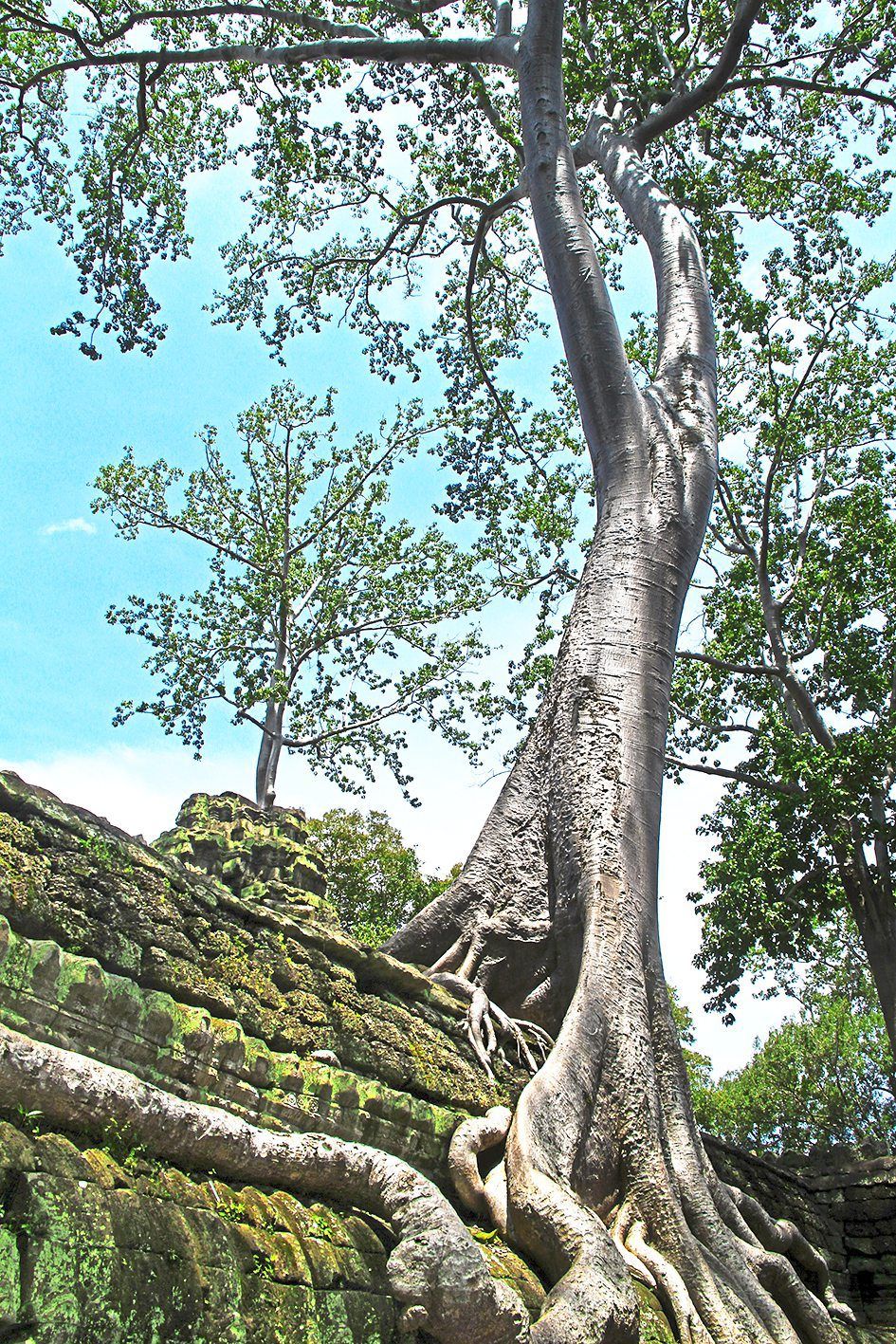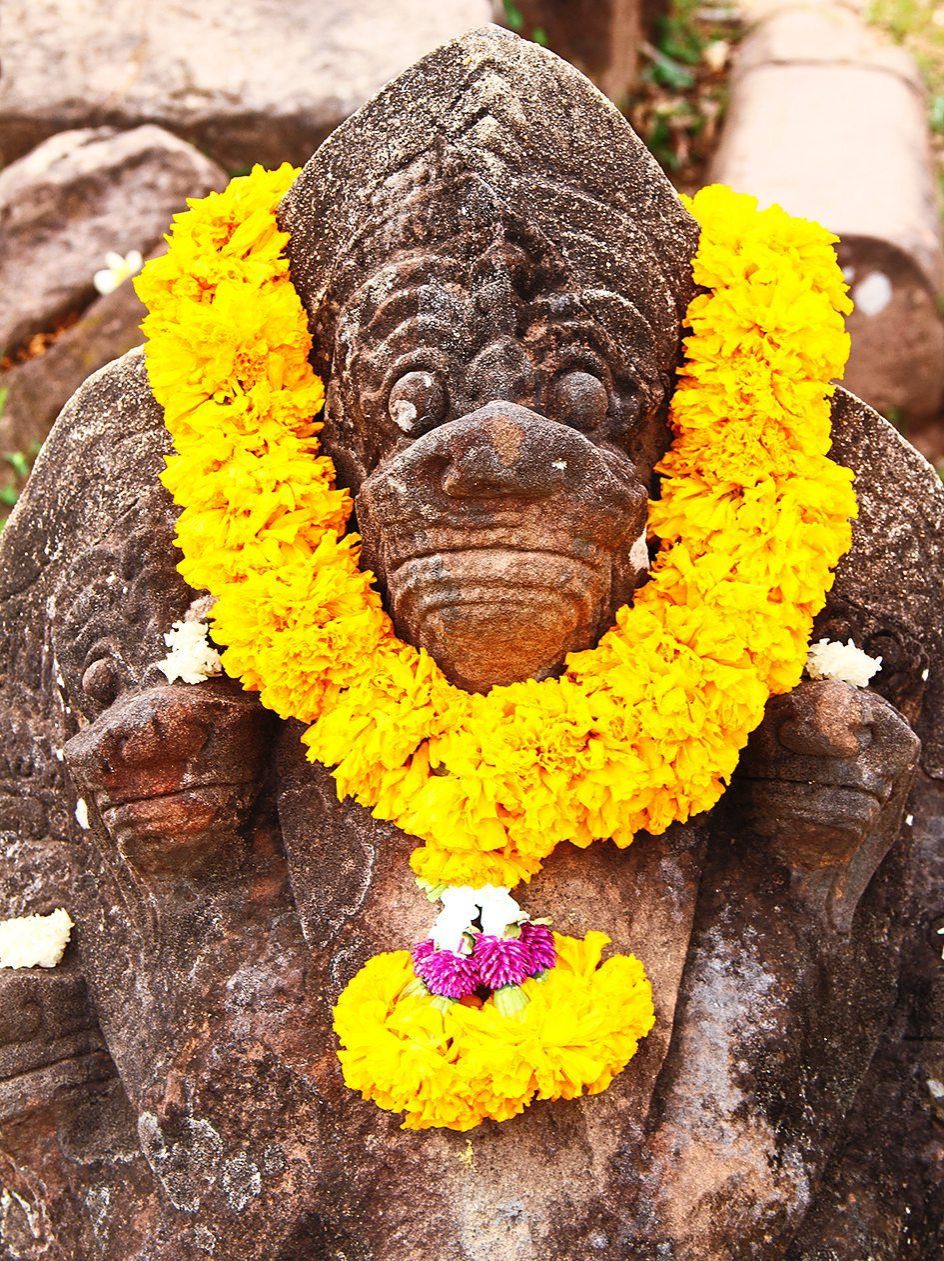Prasat Hin Khao Phanom Rung in eastern Thailand is perched on an extinct volcano. — Photos: DAVID BOWDEN
The Khmer Empire was one of the most powerful in the region from the ninth to early 15th centuries. At its peak, it extended over much of what is now Thailand, Cambodia, Laos (Lao PDR), and southern Vietnam.
There are now numerous sites in these countries where budding Indiana Jones archaeologists can admire the architectural masterpieces of the former empire. This legacy of well-preserved archaeological sites and others in ruin still attract millions of curious tourists annually.
Its demise has baffled archaeologists, as it is difficult for them to fathom how a vast city centred on Angkor Wat (located in Siem Reap, Cambodia) could have declined in power. It is worth noting that, at its peak, Angkor supported more people than London did at the time.
Unesco World Heritage Sites now protect several Khmer sites across the region, while others are being considered for placement on the prestigious list. Their recognition helps preserve the sites, and each one makes a valuable contribution to tourism. Angkor was developed principally because the Khmer people were able to harness water from the Kulim Mountains and Tonle Sap in order to irrigate crops and sustain life. A complex system of canals and reservoirs, called barays, flowed through the temples and the surrounding agricultural land.
Being an agricultural society, water was essential for the Khmer settlements that were established across the floodplains of various river systems, including the mighty Mekong. One of its tributaries fed into the Tonle Sap, the region’s biggest inland waterway.
These vast flat lands were intensively farmed, and many goods were traded along the rivers.
Maritime trade also developed as goods were transported down the rivers and then from several coastal ports into the region. This trade extended as far as India, and, afterwards, elements of the Indian culture began to influence early Khmer culture, art, and religion.
Initially, the Khmers were animists, and then they adopted Hinduism, with Buddhism coming later. Some Angkorian temples display evidence of both Hinduism and Buddhism.
An empire in decline
By the 15th century, the expansive Khmer Empire was in decline, with one theory suggesting that this occurred because the agricultural system could no longer support the population. Perhaps the complex system of Angkorian canals and dams became clogged, and the Khmers found it difficult to access water and farm the land. Could siltation have been responsible? However, siltation is a slow process, and clearing these canals on a regular basis should not have been beyond the capability of such an advanced civilisation as Angkor.
Another more plausible suggestion is that the decline was the result of the great Thai migration from the 12th to 14th centuries. In 1431, the Thai Kingdom of Ayutthaya became more powerful than Angkor, leading to the suppression of Khmer dominance across the region.
Anyone who has visited the massive Angkor site will appreciate that the famous temples couldn’t just “disappear”. It’s true that the forests took back many sections, with the Ta Prohm temple retained in a semi-wild state with tree roots entwining the sandstone and laterite blocks from which the buildings were built.
Monumental empire builders
The Khmer were great builders, erecting monumental structures across the land. Significant cities and towns like Angkor and Sambor Prei Kuk (Cambodia), Vat Phu (Laos) and, Phimai and Phanom Rung (Thailand) were connected by well-constructed and frequently-used roads.
The Khmers expanded their empire from their base in Angkor along these roads into the region. This mainly occurred in the west and the north of the empire, while wars were fought with the Cham in the east. The Cham Kingdom, from central Vietnam, fought frequent wars with the Khmers. Despite their differences, the two empires still traded with each other, and their cultural influences moved in a similar direction.
Grand stone temples and associated buildings were erected with each land conquest. Most took years to complete, with work on the famous Angkor Wat taking some 30 years to finish.
Jayavarman VII (1181 CE to 1215 CE) is regarded as the greatest Khmer king of all. After sending the Cham on their way, Jayavarman set about building temples, monuments, roads, and the impressive Angkor Thom complex dominated by the wondrous and massive stone building, Bayon.
The richly decorated Bayon is noteworthy for its 200 Buddha faces etched into the façade. Its outer walls are also adorned with intricate bas-reliefs (stone carvings) depicting Angkorian life during the era.
There are insufficient superlatives to describe Angkor Thom, and it has numerous twists and turns to engage admirers for hours.
The Bayon and its neighbouring temples were off-limits for decades due to civil unrest during the Khmer Rouge era. However, in an empire strikes back scenario, the temples and the adjoining tourist town of Siem Reap are now some of Asia’s most exciting travel propositions.
The Lao link
Wat Phou (Vat Phou) in southern Laos, some 380km east of Buri Ram, was an important religious site during the Khmer era. Archaeologists date the first site near the western bank of the Mekong River to the fifth century, but the remains of the temple that visitors now admire only date back to the 11th century. Interestingly, Wat Phou predates the more famous Angkor Wat in neighbouring Cambodia.
Those who make the somewhat arduous journey to Pakse and Wat Phou will appreciate just how important Khmer culture once was in the region. Pakse is some 400km from Angkor, and such a journey would have taken many days back in the 11th to 13th centuries.
Wat Phou was initially dedicated to Hindu gods, but sometime later, it was converted to Buddhism. Now little more than a ruin, this Unesco World Heritage Site, known officially as the Champasak Cultural Landscape, is one of the most significant religious sites in the country.
Wat Phou is a one-hour drive south of Pakse, and road access can be problematic during the wet season (April to October).
Thai sites
Northeast Thailand has some of the finest examples of ancient Khmer temples outside of Cambodia. Four of the finest monuments are within easy half- or full-day excursions from Khorat or Nakhon Ratchasima.
Phimai, 70km to the north of Khorat, is one of the best-known Khmer sites in this part of Thailand. Phimai Historical Park is home to various Khmer structures that are architecturally similar to Angkor.
Today, few visitors make it to Phimai, and on a slow day, visitors may have temples like Prasat Hin Phimai all to themselves.
The expansive 12th-century Buddhist temple complex, built from laterite, brick, and sandstone and fully restored by Thailand’s Fine Arts Department, now appears in its near-original grandeur.
Another religious site of significance is Prasat Hin Phanom Rung, an expansive complex strategically perched on a volcanic outcrop, 350m above sea level.
Phanom Rung dates from the 10th to the 13th centuries and was initially a Hindu temple, built from pink sandstone. It too is located along an ancient route that once connected it with Angkor.
One of its most famous carvings is the Phra Narat lintel, located above a doorway. The lintel was plundered from the site in the 1960s, and some years later, it went on display at the Art Institute Of Chicago in Illinois, the United States. After the Thai Government lodged its complaints, the lintel was eventually returned to its home in Thailand.
Prasat Sikhoraphum is another 12th-century Khmer temple located between Surin and Sisaket. It was built by King Suryavarman II for Hindu worship, and its five sandstone and brick towers, are built on a laterite base. The temple was converted for Buddhist worship in the 16th century. Cross-border connectivity
The countries of Asean are working towards opening their borders to make it easier for tourists to visit these sites. Remote border crossings aren’t as problematic as they once were, despite some only being open during daylight hours.
While it is possible to travel between all these sites, it is best to check with the various embassies regarding border crossings and the need for visas for some nationalities.
Most of the sites are easily accessible by road. From Bangkok, head eastward to Nakhon Ratchasima. Phimai and Wat Rung are accessible by car. From Wat Rung, head east towards Pakse, near the Lao border. It’s best to seek advice in Pakse from a local travel agent before heading south to Wat Phou.
Reaching Angkor from Pakse can be challenging, with the road leading south to the border and then through northeast Cambodia to Stung Treng, across the Mekong River, and then westward to Siem Reap.
The 400km-long road from Siem Reap back to Bangkok crosses the Thai border at Poipet.
Angkor and the other wondrous ancient Khmer archaeological sites are now accessible to intrepid travellers who can head off by car on a journey of discovery through neighbouring lands.
Reading list
Seek out the following books to help you unravel the architectural jigsaw puzzle that is the Angkor Empire:
1. Ancient Sukhothai: Thailand’s Cultural Heritage by Dawn F. Rooney (2008, River Books)
2. Angkor: An Introduction To The Temples by Dawn F. Rooney (2001, Odyssey Guides)
3. Places Of The Gods: Khmer Art And Architecture In Thailand by Smitthi Siribhadra and Elizabeth Moore (1992, River Books)
Monuments from the kingdom of Khmer
Prasat Hin Khao Phanom Rung in eastern Thailand is perched on an extinct volcano. — Photos: DAVID BOWDEN
Prasat Sikhoraphum is a 12th-century Khmer site located between Surin and Sisaket.
The Angkor Archaeological Park in Siem Reap is a very popular tourist attraction. — Pixabay
The Phanom Rung Hai Historical Park is a Khmer site located just south of Buri Ram in Thailand.
Wat Phu near Pakse in Laos is an 11th-century Khmer Temple and a Unesco World Heritage Site.
Phanom Rung dates back from the 10th to 13th centuries and was initially a Hindu temple.
Angkor Wat, the world's largest religious site, is surrounded by forests and agricultural land.
Intricate carvings like these at Wat Phu in Laos are a feature of Khmer temples.
The Ta Prohm temple within the Angkor Archaeological Park is mainly known today for this strangler fig tree.
CAMBODIA SIEM REAP ANGKOR HERITAGE PARK TA PROHM TEMPLE STRANGLER FIG

















